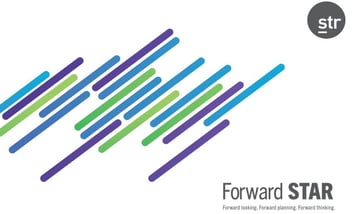Understanding and Utilizing Hotel Analytics
Read MoreMaking the Switch
So, you’ve decided to move your hotel organization away from spreadsheet-based reporting to a modern business intelligence/analytics solution. First of all, congrats, and well done! This was likely a lengthy process that required engaging multiple stakeholders, many calls, demos, and a bit of begging for budget.
There will be no snarky comments here; we know the state of our industry, and the fact is that many of us in hospitality still use spreadsheet-based reporting today or made the move away from it fairly recently. As a recovering Ctrl+C, Alt+E, S, V, E (IYKYK) ninja myself, I promise you that you’ve made the right choice and won’t look back.
At this point, you’ve narrowed it down to a shortlist of potential solutions, or you’ve already made your choice and decided to move forward with one (I can recommend one in particular if you’re interested). Now the question is, how do you pull this off without a) losing your mind or b) losing your job?
Over the last seven years (!) I've helped many organizations make the very same move and have seen it all - the good, the bad, and the ugly. I’m sharing some of what I learned so you can do the same and come out of it looking like you knew what you were doing all along.
Get Your Data In Order
‘Garbage in, garbage out’; as the adage goes. If you're moving from Excel to analytics, there's no better time to get your house in order when organizing the data in your source systems. In fact, only switch to a new system or tool after reviewing your source system data first. Otherwise, you’re just going to have a lot of great visualizations to show how poor your data quality is and make more work for yourself.
So, in practical terms, what does this actually mean? Think about how you want to view your business through different lenses. For simplicity’s sake, let’s focus on your PMS data for a moment. Have you taken a look at your PMS back-end recently? It’s a bit of a mess, to put it lightly. Do you have duplicate rate codes or market codes? Do you have all the distribution channels you want to report on in the PMS? Are they (correctly) mapped from the CRS? If you’re in a portfolio scenario, multiply this by the number of properties or brands. Do you have uniform market segments, rate codes, distribution channels, and room classes across the board?
This can get messy in a hurry, so my recommendation would be to sketch all of this out in detail. Lay out exactly how it looks right now, then start thinking about the changes you want to make. Draw up your ideal future scenario, then make the necessary changes to put it in place. Ironically, the best tool for the job here is likely a good old spreadsheet. They do have their uses, after all - but analytics is not one of them. If you can’t wait and want to go ahead, make sure that your tool of choice has data management capabilities to make cleanup easy.
Start With the Basics
At this point, now that your data is in order, you’ve hooked it up to your fancy pants BI/Analytics tool of choice and you’re off to the races! No more copy/paste lifestyle for you, from here on out, it’s all about creating custom dashboards to show off your AI-powered analysis that determines the additional market share gained from a strategy combining direct booking, targeted upsells and total revenue optimization based on guests' zodiac sign and the moon phase…
…Not so fast. You’ll be 10 minutes into explaining a single custom dashboard in a meeting when someone will ask “Which one is the x-axis again?”. If you’re not careful here, you could lose the whole team’s faith before you even get started. My advice is to keep it simple to start, then progressively get more advanced as the organization comes up to speed. Crawl, walk, then run.
What does that mean? Find the analysis that’s done daily, takes the most time to produce, and that people rely on the most. For revenue management folks, your daily pickup and pace reports are a great starting point. Figure out how you can get the same insights from your old spreadsheet-based reports to the people who need them in a better, faster, easier to use format.You’ll have them onside and singing your praises in no time.
Leave Your (Bad) Old Processes Behind
Now with that said, be careful not to fall into the trap of taking a half step forward. Your new tool has capabilities and features that your old spreadsheet can only dream of - don’t use your shiny new Ferrari to plow the fields. I’ve seen organizations finish onboarding with a tool and say effectively “Great! Now I can use this to export into my Excel way easier!”. My friend, you’re missing the point entirely.
Your new tool represents an opportunity to reimagine the way you operate. Instead of adapting the new tool to fit the old processes because that’s how you’ve always done it, look for ways to build new processes around the tool. If it’s truly the kind of digital decision intelligence workspace it should be, this won’t be hard - but it will take courage. Change is hard, and convincing people who’ve done things a certain way for a while is harder still, but you likely won’t get a better opportunity to make meaningful changes to your internal processes again.
So, that gigantic spreadsheet that you print 12 copies of 6 pages of for the weekly strat meeting?- it’s time to say goodbye. The report your GM loves because they know *exactly* which cell to look at to know whether last week was good or not? See ya! These time-consuming, manually produced reports can be filled with human or formula errors and worse - when the analyst who built it or the GM who asked for it leaves, it’s useless. Build new processes using rich, visual dashboards designed to be intuitive and interactive.
If you have good processes in place, keep and improve those. For example, instead of manually emailing a daily flash, how about an automated report subscription for the same people? That brings me to my next point…
Bring the Whole Team Onboard
In most hospitality organizations, there is at least one person I affectionately refer to as the “report gopher”. This individual is a subterranean creature, spending most of their time buried in rows and columns of various reports. They are often the first in and the last out of the office, and their inbox is stuffed with requests for reports from everyone across the organization. If you don’t know who your team's report gopher is, it’s probably you. Fear not, report gopher - analytics will liberate you!
Ok but seriously, the days of having a go-to person to run you a report are well and truly behind us. That new BI & Analytics tool you just implemented? If you picked the right one, it’s easy to use no matter which department you work in. Rocket scientist degrees are not necessary to operate a dashboard, nor are complex day-long training sessions.
By moving from time-sucking manual spreadsheet reporting to a modern, automated digital workspace, and giving access to users across the organization, you’ll do a couple things. First of all, those clever people you hired as analysts and revenue managers will spend less time on mind-numbing copying & pasting and more time being clever and actually analyzing data. Secondly, if your tool makes it easy for you to give access to folks in the Sales, Marketing, Operations, Finance, Corporate and other departments - congratulations, you’ve just democratized access to data!
Instead of all those folks reaching out to that poor report gopher and waiting on them to reply, you’ve just empowered them to track performance and highlight trends & opportunities. They’re clever folks too.Now you’ve turned the whole team into analysts. What’s more, if you can use this new tool to collaborate and share data across the organization, the days of embarrassingly sending an “oops I forgot the attachment” email are behind you.
Trust an Expert
With all of that said, if you’re at the shortlist or contract signing phase of a new business intelligence/analytics project, you’re closer to the start than the finish. But don’t let me scare you, while the above are some tips on how to do this yourself - you can also cheat a little. That is, you can partner with someone who’s been there and done that multiple times before -someone who eats, sleeps and breathes hospitality KPI’s and knows when it is and isn’t appropriate to use a pie chart for data viz.
In fact, the provider of that fancy new BI tool should have some of these kinds of people available to you to ensure you succeed with their product. Ideally, they’ll be involved from the beginning, help you through the setup, onboarding, and check in with you on a regular basis to make sure you’re reaching your goals. The important thing is to trust them. They are as invested in making this a success as you are, believe me. So when they suggest a particular tweak or change, consider it and think of the downstream effects. It could save future you from a lot of wasted time and headaches.
Wrap Up
I hope my tips for making the switch from spreadsheets to analytics will prove useful to those of you already on your journey and will help you avoid some common pitfalls I’ve seen organizations fall victim to. If you’re not quite there yet, and are still doing spreadsheet based reporting, don’t give up hope yet. Use this guide as part of your planning, so you have a full view of what lies ahead. If you’re ready to make the leap, or need a bit of a push, I know a guy who can help.
%20(1).png?width=400&height=124&name=21051_HotelIQ_logo_BJ_PB_DM_GR-05%20(1)%20(1).png)




Comments